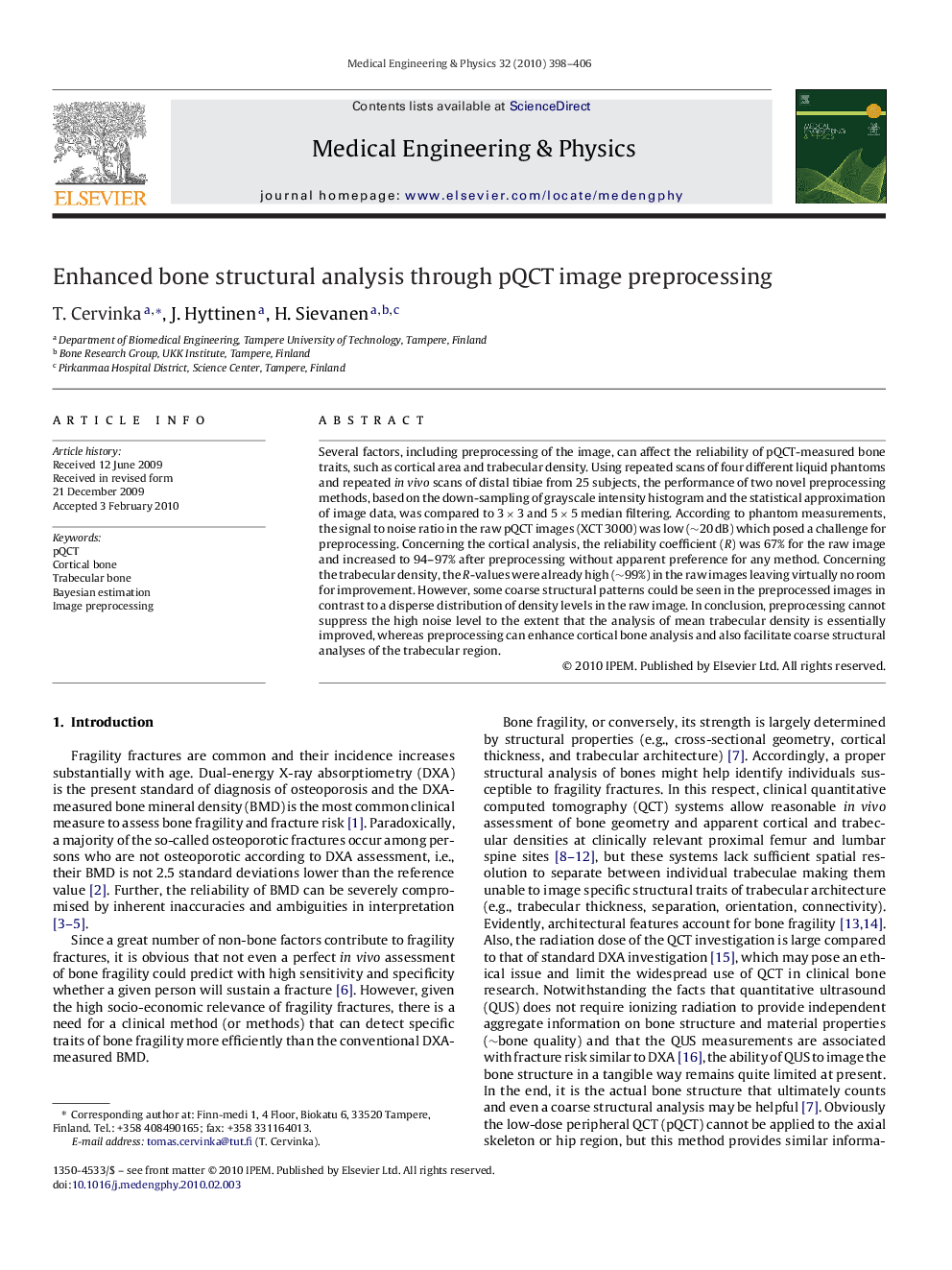| Article ID | Journal | Published Year | Pages | File Type |
|---|---|---|---|---|
| 876388 | Medical Engineering & Physics | 2010 | 9 Pages |
Several factors, including preprocessing of the image, can affect the reliability of pQCT-measured bone traits, such as cortical area and trabecular density. Using repeated scans of four different liquid phantoms and repeated in vivo scans of distal tibiae from 25 subjects, the performance of two novel preprocessing methods, based on the down-sampling of grayscale intensity histogram and the statistical approximation of image data, was compared to 3 × 3 and 5 × 5 median filtering. According to phantom measurements, the signal to noise ratio in the raw pQCT images (XCT 3000) was low (∼20 dB) which posed a challenge for preprocessing. Concerning the cortical analysis, the reliability coefficient (R) was 67% for the raw image and increased to 94–97% after preprocessing without apparent preference for any method. Concerning the trabecular density, the R-values were already high (∼99%) in the raw images leaving virtually no room for improvement. However, some coarse structural patterns could be seen in the preprocessed images in contrast to a disperse distribution of density levels in the raw image. In conclusion, preprocessing cannot suppress the high noise level to the extent that the analysis of mean trabecular density is essentially improved, whereas preprocessing can enhance cortical bone analysis and also facilitate coarse structural analyses of the trabecular region.
